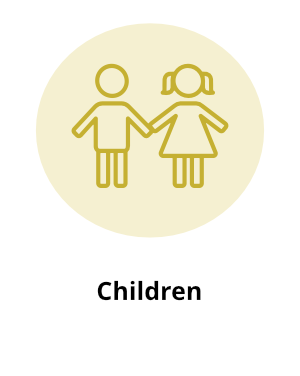Eat/Sleep Cluster
Home > TAND Clusters > Eat/Sleep > What to do > Eating behaviour > Children
Eating behaviour in children
Managing mealtimes
- Encourage your child to sit in the same place at the table and have fun-filled conversations together as a family.
- Where possible, eat meals together to present opportunities to model healthy eating. Eat a small snack alongside your child at the table, if your child eats earlier than others in the family.
- Do not force sudden changes in mealtime structure or food items. Changes should be gradual and small. For example, if there are four items on a plate for mealtime, only introduce one new item.
- Children eat slower than adults. Do not rush children to finish their meal or set unrealistic goals for clearing their plate. However, the use of timers and visual stopwatches may help them speed up a little if they are taking too long.
- Remove external distractions that can lead to sensory overload. Do not have screens or electronic devices on view if possible (unless recommended by a behavioural therapist).
- When introducing new food, do not over-emphasise their attempts. If they try the food and spit it out, do not draw attention to it. Acknowledge their attempt and praise them for trying.
- When trialling new foods over time, try and present it again on another day or in a different way at a later time.
- Encourage your child to play with the textures and feeling of food. These sessions may occur outside of the set mealtime. Encourage your child to lick food without swallowing or handle food in their hands without eating.
- Involve your child in the preparation of meals if there are anxieties around the contents of meals or ingredients.
- Do not offer drinks or snacks in the hour leading up to set meals.
- Work with your child to create choice and routine. Use visual schedules and picture cards for meal planning. Offer choices for mealtimes (e.g. “do you want carrots or peas today?”).
General Mealtime Guidance
[csds.qld.edu.au]
Mealtime Strategies and Food Exploration: Information for Families
[media.gosh.nhs.uk]
Mealtimes
[gov.wales]
Visual Supports for Introducting New Foods to Children with Autism
[autismlittlelearners.com]
Sensory sensitivities
- If pica occurs as a sensory behaviour, experiment with replacing inedible items with foods of a similar texture (e.g. marshmallows, breadsticks, crumble topping).
- Traditional foods may be bland or uninteresting (e.g. mashed potato, bread, rice, yoghurt). Additional seasoning and condiments may encourage eating of certain foods. Your child may prefer sour or spicy tastes – strong smelling sauces or tangy flavours may be helpful.
- If your child avoids foods with certain textures, smells and tastes, they may have an over-sensitivity to food (e.g. gag or vomit or become visibly distressed when presented with certain foods). Modify new foods in line with the sensory preferences they prefer (e.g. overcook vegetables if they do not like crunchy hard textures). Experiment with food colourings if colours are aversive. Reduce smells by keeping food in lidded containers. Mask smells in the kitchen of non-preferred items, or consider visual distractions if this has been recommended by a professional.
Understanding Sensory Issues and Their Impact on Mealtimes and Feeding
[stgeorges.nhs.uk]
Increasing food choice
- Do not bargain or bribe with preferred food to encourage your child to eat a non-preferred food.
- Use positive reinforcement to encourage positive behaviours and ignore negative behaviours. Prioritise positive reinforcement strategies over punishment. Praise attempts or small gains, reward small steps for trying or eating new foods. You may find the ‘Kids Healthy Eating Reward Chart’ in the resource panel helpful for this.
- Use visual behaviour and reward charts to encourage participation and motivation. Picture cards, timers, visual schedules, stickers, food games can all be used to increase involvement.
- Food chaining is a behavioural technique that encourages trying a greater variety of foods. It is a four level process based on varying taste and texture gradually over time. See the resource panel for an example of food chaining to help the child move from only eating french fries to other types of potatoes.
- Gradual desensitisation is a behavioural technique for trying new foods. It is the process of breaking down a larger goal into smaller steps and rewarding each small achievement before moving to the next step. This process can take weeks or months to achieve the final stage. Persist with each individual step until it is achieved consistently before moving on to the next step.







